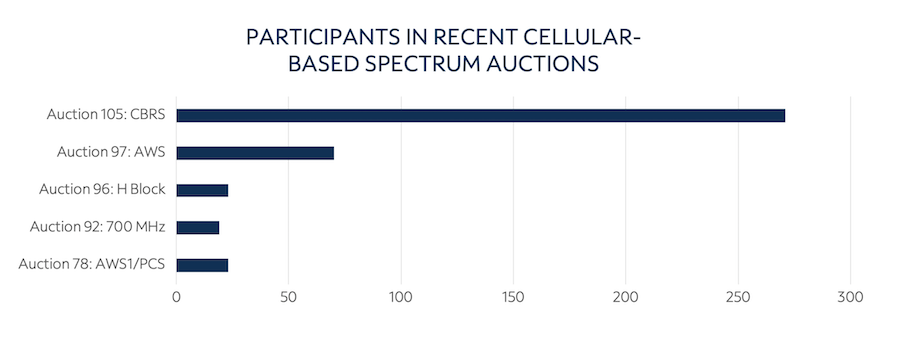Spectrum Policy
Charter Applauds Recent CBRS Auction
September 22, 2020
Share Article:
As American consumers and businesses transition to a world increasingly reliant on seamless connectivity, the allocation of our national spectrum resource – and valuable mid-band spectrum in particular – is increasingly vital. A healthy 5G ecosystem requires a balance of licensed and unlicensed spectrum, and through its 5G FAST Plan, the FCC is making that happen.
Charter was excited to have been able to participate in the FCC’s first auction of new 5G mid-band spectrum, winning 210 licenses in 106 counties across the country. Our investment in CBRS priority access licenses (PALs) will further enhance our technology, infrastructure, and customer experience.
“Spectrum Mobile is the nation’s fastest-growing mobile provider, offering customers value, flexibility, and quality connectivity. Our customers continue to demand seamless connectivity to all of their devices no matter where they are, and we are excited to add CBRS-powered 5G technology to our broader connectivity ecosystem.” – Danny Bowman, Chief Mobile Officer, Charter Communications
The CBRS auction was a great success for the industry and for US consumers who will benefit from the improved services they will receive from a diverse group of competing companies.
“With nearly four times more participants than recent cellular-based spectrum auctions, the CBRS transaction was a great success, both in terms of total auction proceeds and broad cross-industry participation. Charter was excited to have been able to participate in the first auction of new 5G mid-band spectrum, and we commend the FCC for their efforts to encourage efficient and innovative use of CBRS spectrum, such as by setting auction rules like county-sized licenses that made the spectrum accessible for many more buyers – including rural and smaller providers and new entrants. To ensure that consumers are now able to use this valuable mid-band spectrum, we encourage the FCC to adopt measures that will mitigate the risk of harmful interference in the band.” – Elizabeth Andrion, SVP Regulatory Affairs, Charter Communications

Incorporating elements of the CBRS framework into future auctions – such as defining license areas at the county level – offers many potential benefits, including:
- Promoting wireless competition, including access for new entrants and smaller providers
- Enhancing spectrum utilization
- Encouraging broadband deployment
- Technological innovation
Our national spectrum resource is limited and to ensure it is used efficiently it must be protected from harmful interference. In particular, Charter has urged the FCC to require protection of the CBRS band from operations in adjacent bands, by mandating that carriers coordinate operations, including by making time division duplex (TDD) synchronization available to CBRS operators upon request. Protecting against interference between CBRS and its adjacent bands, the C-Band and the 3.45-3.55 GHz band, is critical to ensuring all three of these critical spectrum bands will be put to their highest and best use.